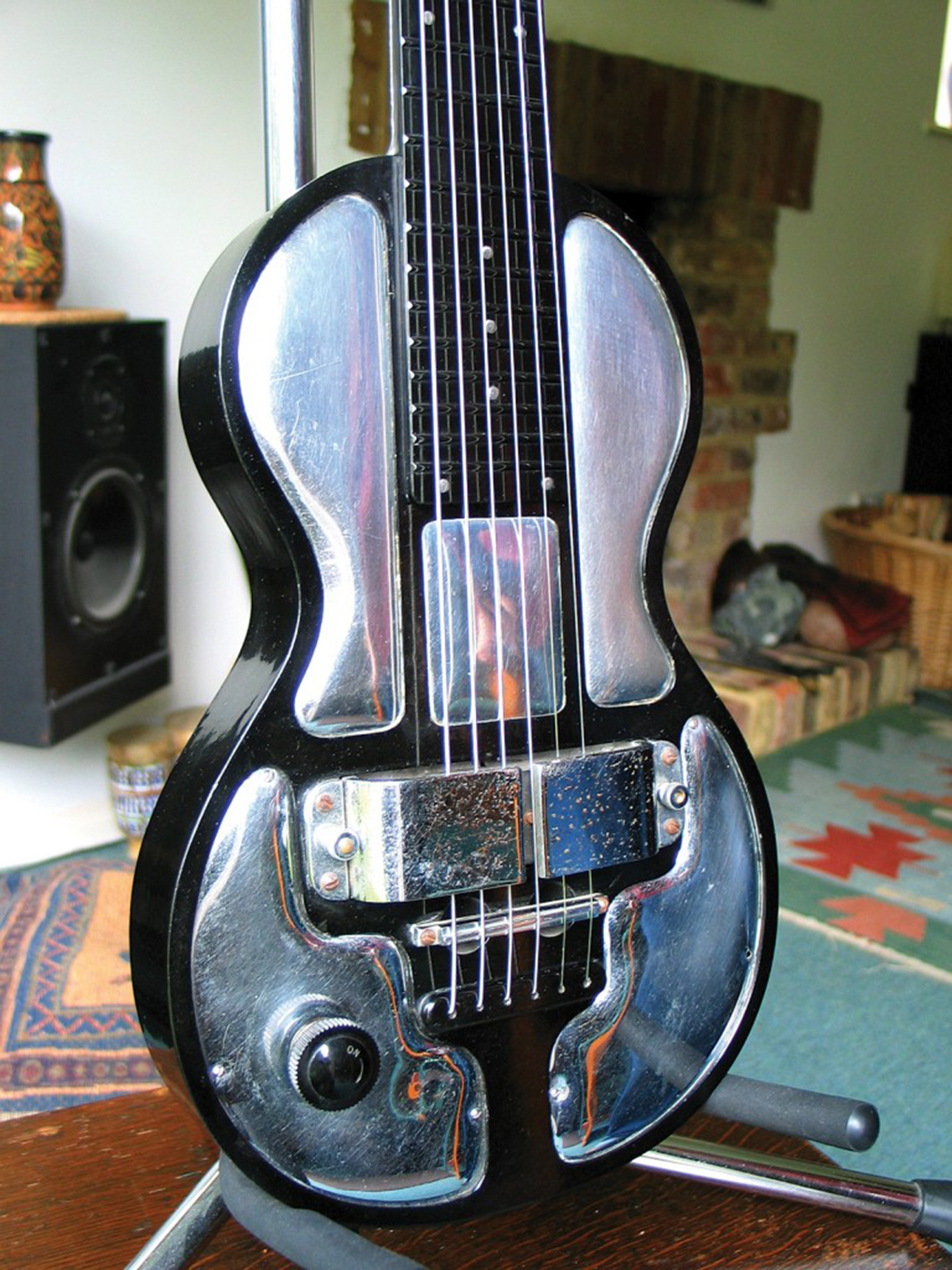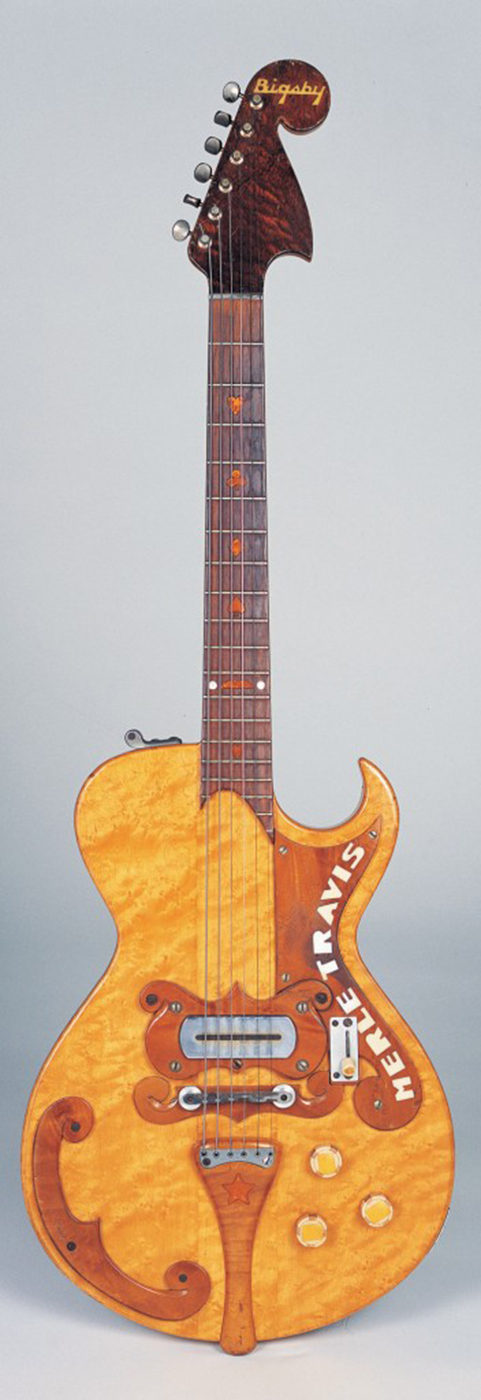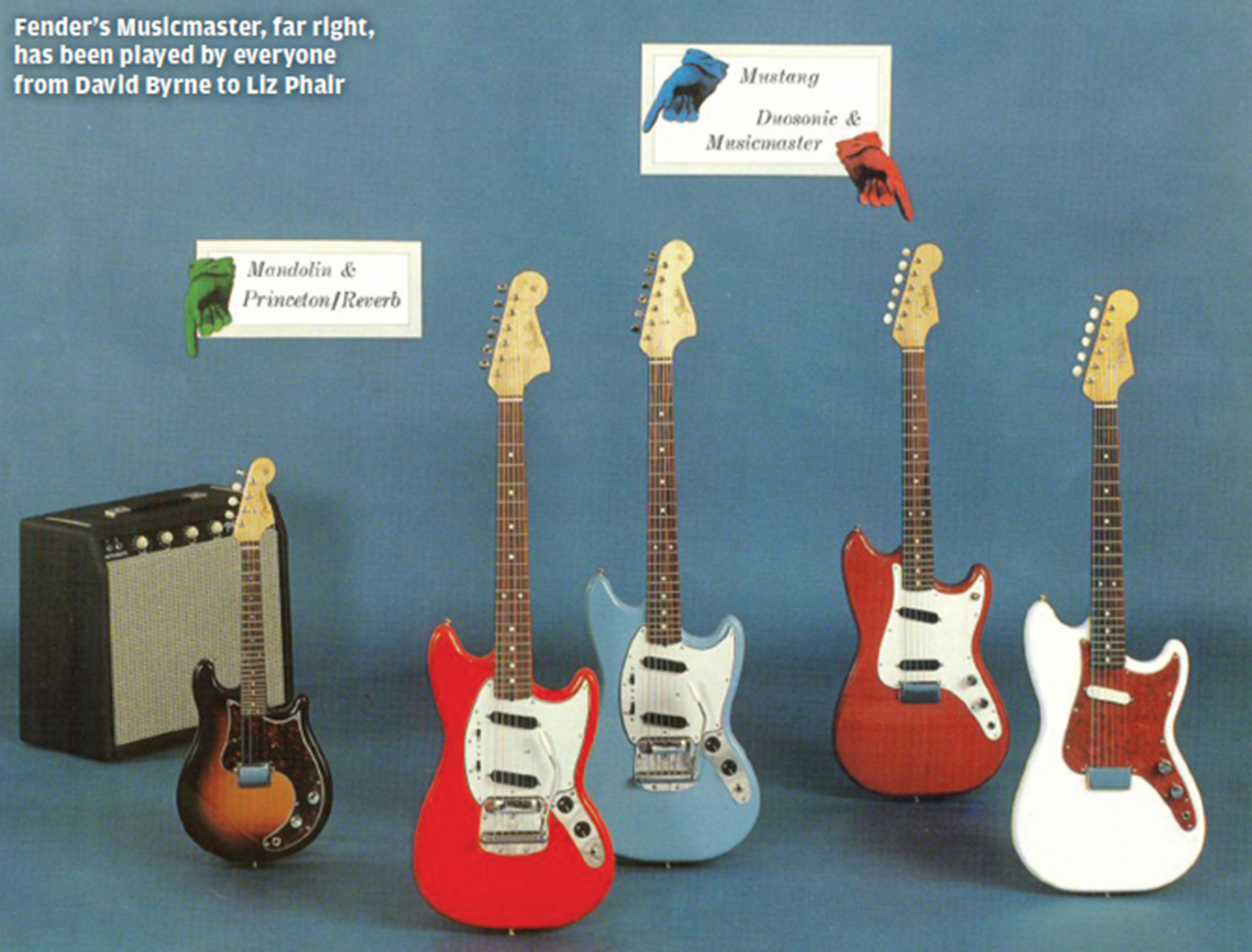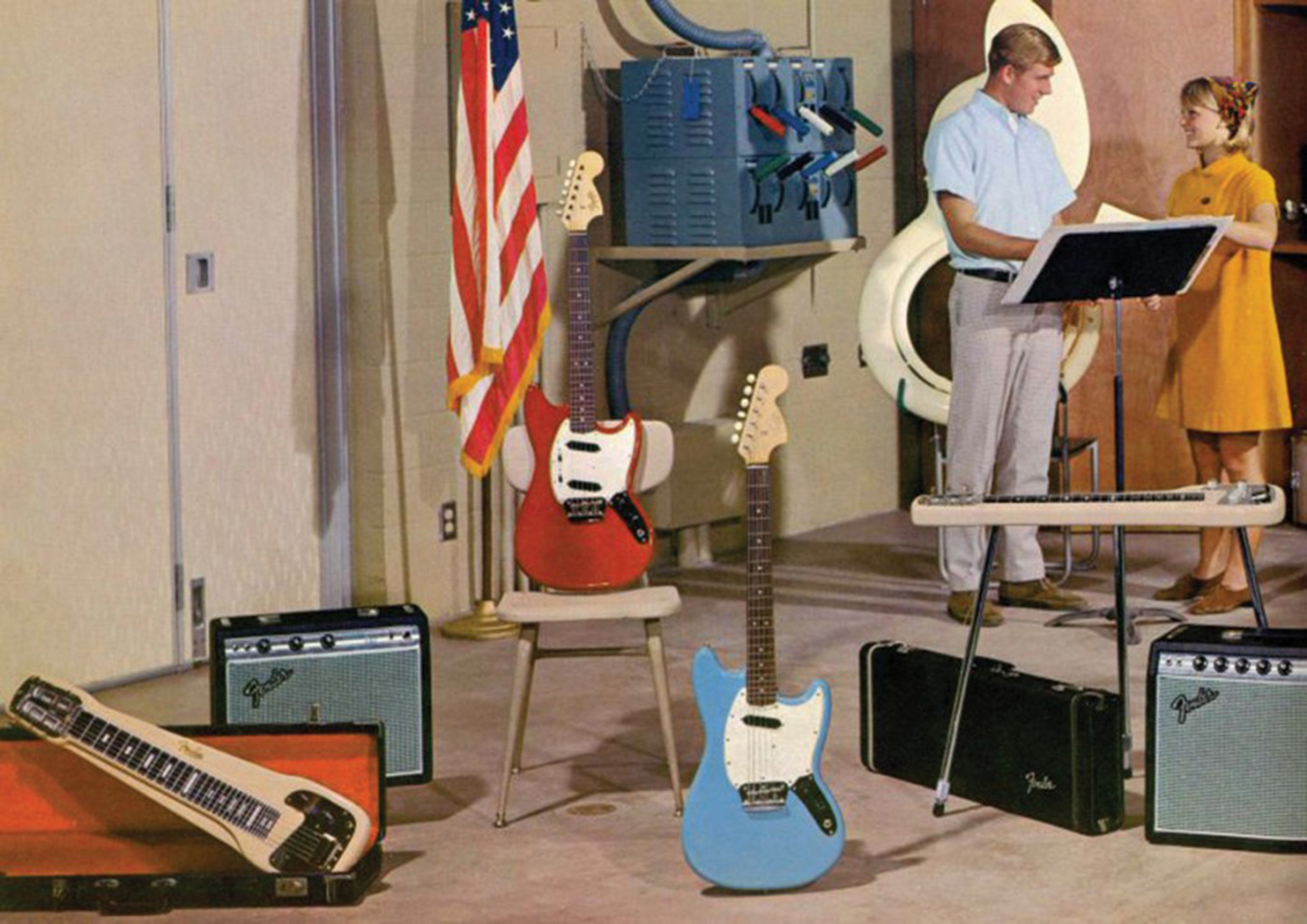Related Tags
Single Pickups – The Power of One
At the dawn of the electric age one pickup was all you got, but then came the ’50s and ’60s with switching choices aplenty. Is there still a place for a guitar with the bare minimum of electronics, reflecting everything back on the skills of the player? Michael Heatley thinks there is…

To me, it was a tree with a microphone. It was very simple, it could do everything I needed it to do.’ Leslie West’s description of the no-frills, single-pickup Gibson Les Paul Junior he used to find fame and fortune with ’60s hard-rockers Mountain says it all. If you’re a guitarist with talent, you should be able to achieve your goals with the simplest of instruments.
Not everyone would, of course, agree. The fact the big three – Telecaster, Stratocaster and Les Paul – have two, three and two pickups respectively attests to that. And Fender’s recent Jim Root signature takes the Tele into active pickup territory, a long way away from its utilitarian country-and-western beginnings. That said, the first variation on the Tele formula, the Esquire from 1950, was in its most famous form a single-pickup job. But more of that later…
Let’s wind back two decades to 1931, the year Adolph Rickenbacker unveiled a basic six-string instrument with a small circular solid body. This was known as the ‘frying pan’ due to its shape. As the first production instrument with an electro-magnetic pickup, designed by partners Paul Barth and George Beauchamp, it is now considered the forerunner of the modern guitar.

When two successive patent examiners questioned whether the instrument was ‘operative,’ Adolph Rickenbacker sent guitarists to perform for them at the Patent Office in Washington, DC, to prove it was. By the time the patent was finally granted in 1937, others had caught up. Even so, Rickenbacker – who only started to enjoy major success after Adolph sold the company in 1953 – had made an impressive mark.
Their Model B electric guitar made in 1935 looks amazingly futuristic even now. It was made using the advanced injection moulding process but abandoned when the Bakelite – the plastic material used to construct early radio sets – was found to expand with increased temperatures, resulting in tuning problems. Eldon Shambin of Bob Wills’ Texas Playboys was, legend has it, not allowed to use his on stage because, in his boss�’s unenlightened words, ‘When I hire a guitar player I want him to look like a guitar player’

If the Gibson ES-150, introduced in 1935, isn’t the granddaddy of all electric guitars, then it certainly has the most grandchildren. It was endorsed by jazz player Charlie Christian, of Benny Goodman’s band, who found electrification transformed his playing. No longer was the guitar a part of the rhythm section, it could now punch out solos that, on record, were sometimes mistaken for a saxophone.
Gibson’s advertising patter was seductive. ‘You hold it, tune it and play it just as you would any guitar, and in appearance it is only slightly different. But strike the strings lightly and you have a tone that can be amplified to whatever volume you desire. Adjust the tone control and you change the tonal colour from a rich bass to a brilliant treble.’ All this, remember, with just one pickup.

While Rickenbacker’s horseshoe-shaped pickups had encircled the strings, Gibson’s was designed by Walter Fuller. The man attributed with pioneering the pickup as we know it today joined Gibson in 1933, and soon afterwards the straight-bar pickup was introduced on a Gibson Hawaiian steel guitar.
On the ES-150 this bar directed the power of two magnets, bolted below the guitar’s arched top, towards the strings. If one string was found to be louder than the rest, Gibson corrected it by simply cutting a notch underneath it in the protruding bar. Though crude by later standards, the ES-150 was a pioneering concept matching old and new technology that established itself as the premier inter-war instrument. At $77.50, the ES (for Electric Spanish) 150 was not within the range of every would-be guitar hero. Another 75 dollars would be needed to buy an amplifier, plus $13.50 for the hard case.
Paul Bigsby, whose name is associated with the vibrato tailpiece, is credited with building the first ever modern solidbody electric guitar for country picker Merle Travis. The guitar had a Bigsby ‘blade’ pickup, and a walnut fiddle tailpiece with a string-through-body design. Travis contended that Leo Fender borrowed his Bigsby guitar for a week in 1948, and it is thus said to have influenced the creator of the Strat and Telecaster – though Fender denied this.
What is certain is that things hotted up when, soon after, Fender entered the electric guitar market with the single-pickup and then twin-pickup Esquire. The twin-pickup version would be renamed first the Broadcaster and then the Telecaster in 1951, and it would set the standard for mass-produced electric guitars for decades to come. The Esquire, now offered only with one pickup, stayed in the range for almost 20 years and it would later find favour with the likes of Jeff Beck (who used a ’54, bought from the Walker Brothers guitarist John Maus, with the Yardbirds) and Steve Cropper. The Esquire retained the three-way selector switch which, instead of offering pickup options, now functioned as a pre-set tone control or bypass switch, offering great versatility for a single pickup guitar.

Fender’s next single-pickup product, the Musicmaster, also enjoyed two decades in production, from 1956 to 1975. An entry-level effort, its body was an uncontoured slab of wood, while the neck, at 22.5″, was shorter than the standard Fenders to which the student could graduate when skills and savings had grown. (A 24″ scale version, introduced in 1964, was named the Musicmaster II.)
Ads extolled the virtue of an instrument ‘specially designed for old and young players with small fingers’. It also proved a hit with female players for that reason. The Musicmaster was also made available with a simple vibrato unit as the Bronco, while two-pickup versions were known as the Duo-Sonic and Mustang respectively.
Price-wise, the Musicmaster ($119.50) was almost half the price of the Telecaster ($199.50), but Fender, being first and foremost an amp manufacturer, had a masterplan. The guitar was marketed alongside ‘plug in and play’ combos like the Princeton and Champ, combining both speaker and amplifier in one portable package.
As you’d expect, Gibson were not about to stand by and leave the student market to their biggest rivals. They grabbed a piece of the action with the launch of the Les Paul Junior in 1954, copying the outline of the original Les Paul to create an uncontoured mahogany body. The pickup was a P90 single-coil, the tailpiece a version of the bar that replaced the trapezoid unit on Les Pauls that same year, and the price a modest $99.
The Les Paul TV was similar to the Junior but boasted a natural ‘limed’ finish similar to that of the Telecaster.
By 1958, the Les Paul Juniors and twin-pickup Specials had become double-cutaway instruments. All, incidentally, had ‘dot’ fret markers in place of the ‘full-fat’ Les Paul’s prominent inlays, and simpler volume and tone knobs.
Gibson’s next ‘cheapie’, the Melody Maker, went into production in 1959 and was again priced at 50 cents below the magic $100 mark. Retaining a single-cutaway outline, but with a thinner body (35mm to the Junior’s 44mm) and a narrower headstock, the Melody Maker had a single-coil pickup mounted with the controls and output jack on its scratchplate to save money. The body felt less substantial and more SG-like compared with a Les Paul Junior, and the single pickup was no match for a P90.
Its introduction came at a time when Gibson was struggling to shift Les Paul Standards, but, with rock’n’roll mania now taking hold post-Elvis, the company was targeting youngsters flocking for guitar lessons or teaching themselves in their parents’ garage. The cut-price Gibsons of this period were all of a very high standard, a Brazilian rosewood fretboard making them more than a mere ‘student’ guitar.
The Melody Maker never quite achieved the classic status of the Junior; the latter adopted an SG outline in the ’60s when all the Les Pauls were revamped and the model was discontinued altogether in 1971. That same year, the SG-100 was introduced as a cheap variant of the (usually dual-pickup) SG with pickguard-mounted controls for affordability, but didn’t last long.
The budget Gibsons then endured two decades out of the spotlight until the new wave’s utilitarian ethos led to players appreciating their affordability and durability anew. Pre-’76 exceptions proving the rule were, inevitably, Leslie West and his biggest UK fan, Mott the Hoople’s Mick Ralphs.
Many of the cheaper Gibsons have been used over the years by slide players to great effect – as has the single pickup Dan Armstrong-designed Ampeg ‘see-through’ guitar of 1969. These were expensive to make and lasted little more than a year in production, though they have since become collectors’ items. Players included Keith Richards, Tom Petty and Leslie West, who was given the prototype. Keith played his on the Stones’ ’69 world tour, Bill Wyman toting a matching bass.
Epiphone, founded in 1903, sold out lock stock and barrel to Gibson in 1957 – but, while most famous for their ’60s semi-acoustics, their thin-line solid-bodies, most notably the Crestwood, were more than ‘poor man’s SGs’. Humble Pie man Steve Marriott was an enthusiastic devotee.
Meanwhile, back at Gibson, their range of semi-acoustics that began with the ES-150 had continued in 1949 with the ES-175. Traditional in looks compared with the Fender Broadcaster, it was the company’s first electric guitar to be designed as such from the outset and its use of pressed maple laminate would become standard on Gibson semis.
It is still being made today. The ES-175’s combination of single cutaway and P90 pickup was one Gibson would repeat in the LP Junior and elsewhere, but the simplicity of the original design, with just a volume and tone knob, twin f-holes and Gibson’s trademark back-angled headstock was attractive in itself. Other single-pickup variations on this theme have been the ES-330T thinline, with a single P90 halfway between neck and bridge, and the ES-125/225.

The instruments manufactured by Fred Gretsch provided the most radical alternative to the Gibson-Fender duopoly in the early days of rock’n’roll. His products were favoured by pioneers like Duane Eddy and Eddie Cochran, and Gretsch offered his guitars in a wider range of colours than his competitors. Pickups – humbucking units named the Filtertron – were usually numerous to match. A ‘student model’ was offered in the shape of the cheaper single-pickup Chet Atkins Tennessean and Anniversary models, offered in 1958, and the Gretsch 6119 of 1961 with stripped-down electronics. Nashville great Atkins was Gretsch’s answer to Gibson’s TV personality Les Paul, and he made sure his guitars got onto the covers of his LPs (there’s a Tennessean on ’61’s Chet Atkins Workshop).
George Harrison briefly played a Gretsch Tennessean in the Beatles’ early ’60s career, but had earlier strummed the best-known ‘basic’ Rickenbacker, a 1962-vintage single-pickup 420. John Lennon had favoured a German-built Hofner Club 40 in those days before ‘name’ American instruments were either affordable or widely available. European designs offered a respectable build quality and playability for a fraction of the price of the ‘real thing’. Hofner guitars – also, of course, favoured in four-string form by Paul McCartney – were affordable but eminently playable. Shadow-to-be Hank Marvin had played a Hofner Congress ‘with a half-inch action’ until he could afford to buy his iconic Strat.
Also around in numbers was the Rosetti Lucky 7, the product of Dutch company Egmond and available in one-pickup form in the UK for 14 guineas.

The ’60s belonged to the Strat, Tele and Les Paul – but as the decade ended, Eric Clapton showed the world just what could be done with just a single pickup. The Gibson Firebird he used for the entire first show of Cream’s final Albert Hall date in 1968, a Firebird 1, the only hardtail variant, was then less desirable than its counterparts with two or three mini-humbuckers. (He used his ES-335 for the second show; the Farewell Cream movie mixes songs from both.) Joe Bonamassa currently totes a ’64 Firebird in emulation of the master.
The ’70s and ’80s saw British guitar makers weigh in with solid single-pickup offerings. Shergold’s Meteor was a descendant of the mid-’70s Hayman Comet, while Gordon Smith used the Les Paul TV as the template for their GS-1. Unlike the ‘original’, their pickups could operate in both single-coil and humbucking modes, giving sounds ranging from Fender’s cutting edge to the weightier Gibson. The result, a fine handmade guitar at an affordable price, found favour with Buzzcock Pete Shelley, while John Otway wields one to this day.
Back in the States, the confusingly named Hamer Prototype of 1981, endorsed by superstar Police guitarist Andy Summers, boasted a giant triple-coiled humbucker at the bridge, nicknamed the Motherbucker. This was in fact two pickups sandwiched together, a DiMarzio PAF nearest the bridge and a single-coil from the same maker. A three-way switch selected bridge humbucker, single-coil or both simultaneously. Paul Hamer claimed it was possible ‘to get anything from a sharp Stratocaster tone to a richer Les Paul sound,’ while Summers was credited with design input.
The ’80s saw the Japanese, when not engaged in copying classic designs, stirring the single-pickup pot. The Westone Paduak I boasted an early attempt at active circuitry, while later in the decade Washburn’s Japanese-made G40V had a triple-coil unit with push-button selectors. Fender Japan’s Heartfield subsidiary offered the RR8D, with built-in distortion.
The most influential hard-rock guitarist of the ’80s, Eddie Van Halen, broke through late in the previous decade with a single-pickup guitar. His search for a sound meatier than a Strat to power his eponymous band led him to home-build a guitar from $130 worth of parts. With a humbucking pickup at the bridge and just one knob, a volume control, the guitar – decorated with Schwinn bicycle paint in a red and white criss-cross pattern – was simplicity itself. Father Jan was a saxophone player, and Eddie’s since suggested he was trying to create a horn-like tone.
In Van Halen’s wake would come a legion of copies from the likes of Charvel, Jackson, Ibanez and Kramer. These pointy-headstocked single-pickup items are now rather unfashionable and, consequently, can be good value on the secondhand market.
The current century has seen other new entries to the marketplace. Leslie West teamed with Dean to produce a signature guitar that improves on his traditional Gibson. Even PRS, guitar-makers to the stars, have paid homage to the LP Junior in the eastern-made single-pickup SE1.

Gibson resurrected the Melody Maker name in 2007 with four electrics – a Les Paul, Explorer, SG and Flying V – in an attempt to combat Fender’s ‘Stratocaster for every pocket’ policy. The idea of owning a US-made guitar with ‘Gibson’ on the headstock remained alluring, though the series’ relation to the original Melody Maker seemed to be their basic construction values and single pickups rather than shape or attributes. The absence of a tone potentiometer makes the variation of volume control and picking-hand position all-important.
A final tip of the hat is owed to those who take matters into their own hands. Blink-182 frontman Tom DeLonge ‘butchered’ his Strat in the ’90s, ending up with one humbucking Seymour Duncan SH-8 Invader pickup controlled by one knob. This was duplicated in a Mexican-made production model available for five years from 1999 before he moved to Gibson for the DeLonge Signature ES-333 which similarly combined a humbucker, a volume control and a hardtail.

But perhaps the ultimate single-pickup axe is Seasick Steve’s Three-String Trance Wonder – a guitar that resembles a Fender Coronado. Its three strings are tuned to G, G and B, and he bought it for $75 in Como, Mississippi from a man named Sherman Cooper, who had it nailed to the wall as a decoration. The pickup? An old Harmony… taped to it.
So is a single-pickup guitar for you? If you need to vary your volume or tone within your band’s set by swapping pickups, or you use a blended sound like the Strat’s out-of-phase tones, then maybe not… but a single pickup has a uniquely purposeful look, and if it’s placed in the sweet spot then it can give a sound of unbeatable character. Are you ready to strip down and get real?
